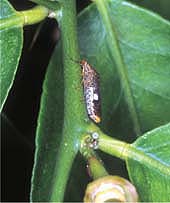All Issues
Letters: January-March 2004
Publication Information
California Agriculture 58(1):4-4.
Published January 01, 2004
PDF | Citation | Permissions
Full text
PD-resistant rootstocks
In “Insecticide treatments disinfest nursery citrus of glassy-winged sharpshooter” (October-December 2003, p. 128–31), the authors state that there are no resistant rootstocks to Pierce's disease (PD). This is incorrect. There are actually a number of PD-resistant rootstocks. While none of them ameliorates the effects of Xylella fastidiosa in susceptible scions grafted to them, this omission implies that the grape industry is without options in development of new cultivars that are resistant to PD. Historically, there were grape-breeding programs in the South within the range of PD at the University of Florida and at the U.S. Department of Agriculture station in Meridian, Miss. Both of these programs developed grape cultivars that are resistant to PD and long-lived under high PD pressure. Hopefully, with time, breeders in California will develop high quality, PD-resistant scions and rootstocks that will give California grape growers options in areas with glassy-winged sharpshooter infestations.
Tim Bourne, grape breeder Visalia
Editor's note: As the writer points out, while PD-resistant rootstocks have been developed, none confer resistance to grafted breeds (scions) and there are currently no commercially available, effective breeds for grape growers to ward off Pierce's disease. UC scientists and others are studying the genetics of grapes, glassy-winged sharpshooter and the X. fastidiosa bacterium in an effort to develop disease-resistant varieties, in conjunction with an extensive classical breeding program ( see July-September 2003, p. 69 ).





